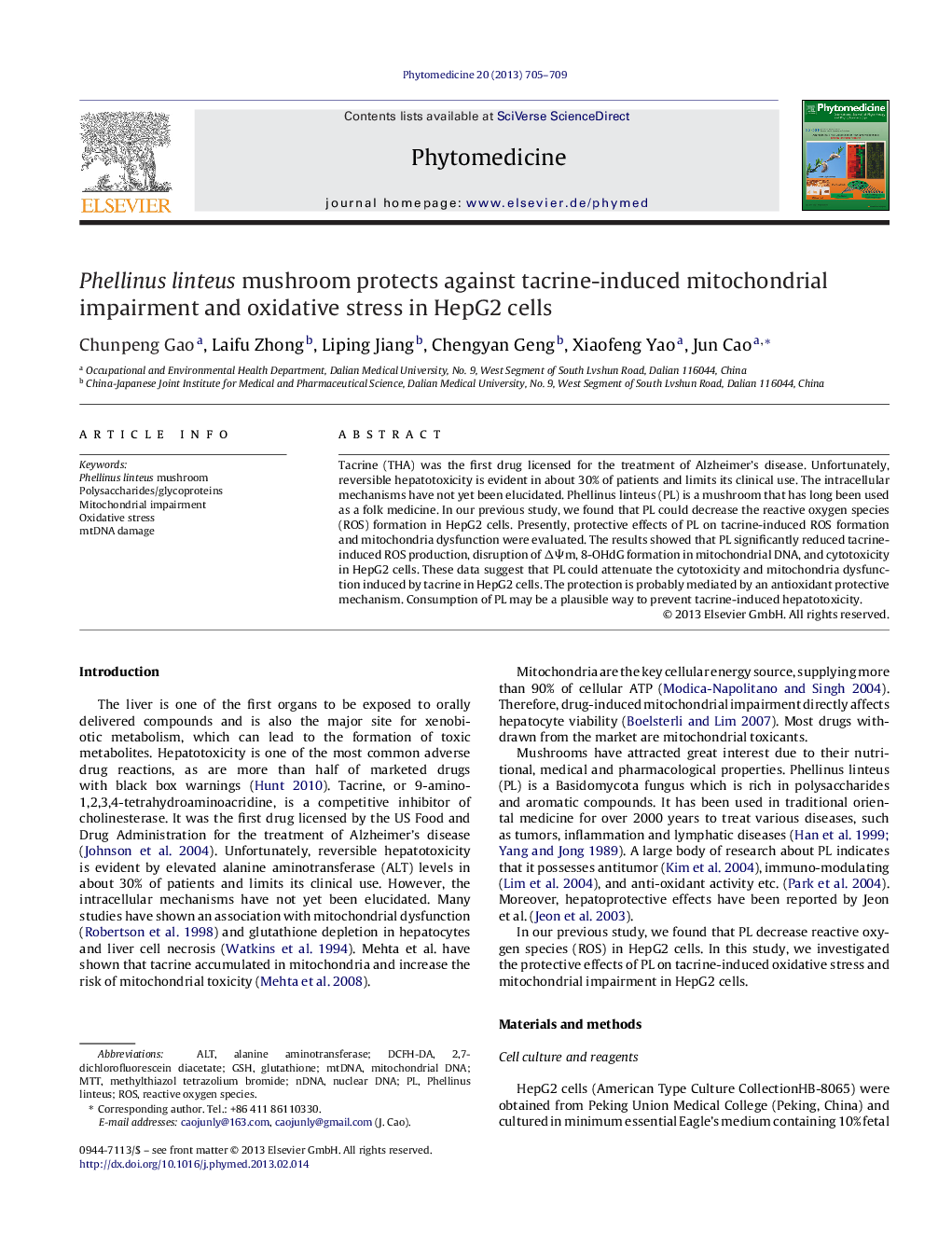| Article ID | Journal | Published Year | Pages | File Type |
|---|---|---|---|---|
| 2496743 | Phytomedicine | 2013 | 5 Pages |
Tacrine (THA) was the first drug licensed for the treatment of Alzheimer's disease. Unfortunately, reversible hepatotoxicity is evident in about 30% of patients and limits its clinical use. The intracellular mechanisms have not yet been elucidated. Phellinus linteus (PL) is a mushroom that has long been used as a folk medicine. In our previous study, we found that PL could decrease the reactive oxygen species (ROS) formation in HepG2 cells. Presently, protective effects of PL on tacrine-induced ROS formation and mitochondria dysfunction were evaluated. The results showed that PL significantly reduced tacrine-induced ROS production, disruption of ΔΨm, 8-OHdG formation in mitochondrial DNA, and cytotoxicity in HepG2 cells. These data suggest that PL could attenuate the cytotoxicity and mitochondria dysfunction induced by tacrine in HepG2 cells. The protection is probably mediated by an antioxidant protective mechanism. Consumption of PL may be a plausible way to prevent tacrine-induced hepatotoxicity.
Graphical abstractFigure optionsDownload full-size imageDownload high-quality image (95 K)Download as PowerPoint slide
